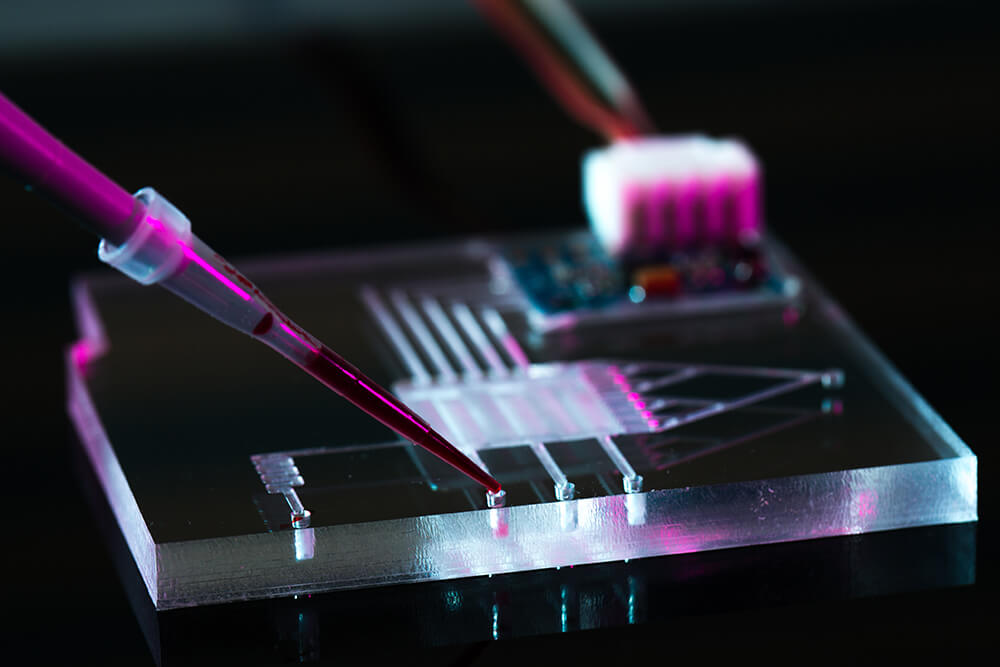7 Amazing Everyday Examples Of Nanotechnology In Action
2 July 2021
Nanotechnology essentially means controlling matter on a tiny scale, at the atomic and molecular level. This sounds truly sci-fi, but can, in fact, be put to some very ordinary uses in surprisingly everyday products. In this article, we’ll explore common products that make use of nanotechnology – but first, let’s get a quick overview of the amazing world of nanotechnology…

What is nanotechnology?
Nanotechnology is about looking at the world on such a tiny scale that we can not only see the atoms that make up everything around us (including ourselves), but we can manipulate and move those atoms around to create new things. Think of nanotechnology, then, as being a bit like construction … only on a tiny scale.
And I do mean tiny. The nanoscale is 1,000 times smaller than the microscopic level and a billion times smaller than the typical world of metres that we’re used to measuring things in. (Nano literally means one-billionth.) If you took a human hair, for instance, it would measure approximately 100,000 nanometres wide. That’s the sort of scale we’re dealing with at a nano level.
That’s all very cool, I hear you say, but how does understanding this nanoscopic world impact (if you’ll excuse the pun) the world at large? For one thing, when we zoom in and look at materials on an atomic level, we sometimes find they behave quite differently and have completely different properties at the atomic level. As a simple example, silk feels incredibly soft and delicate to the touch, but if you look at it at a nano-level, you’ll see it’s made up of molecules aligned in cross-links, and this is what makes silk so strong. We can then use knowledge like this to manipulate other materials at a nano level, to create super-strong, state-of-the-art materials like Kevlar.
This is where the technology bit of nanotechnology comes in – using our knowledge of materials at a nano-level to create exciting new solutions and products.
Everyday products that use nanotechnology
Nanotechnology may seem like something out of the future, but in fact, many everyday products are already made using nanotechnology. Take these seven common products, for instance:
1. Sunscreen
Nanoparticles have been added to sunscreens for years to make them more effective. Two particular types of nanoparticles commonly added to sunscreen are titanium dioxide and zinc oxide. These tiny particles are not only highly effective at blocking UV radiation, they also feel lighter on the skin, which is why modern sunscreens are nowhere near as thick and gloopy as the sunscreens we were slathered in as kids.
2. Clothing
When used in textiles, nanoparticles of silica can help to create fabrics that repel water and other liquids. Silica can be added to fabrics either by being incorporated into the fabric’s weave or sprayed onto the surface of the fabric to create a waterproof or stainproof coating. So if you’voe ever noticed how liquid forms little beads on waterproof clothing – beads that simply roll off the fabric rather than being absorbed – that’s thanks to nanotechnology.
3. Furniture
In the same way that clothing can be made waterproof and stainproof through nanotechnology, so too can upholstered furniture. Even better, nanotechnology is also helping to make furniture less flammable; by coating the foam used in upholstered furniture with carbon nanofibers, manufacturers can reduce flammability by up to 35 percent.
4. Adhesives
Nanotechnology can also be used to optimise adhesives. Interestingly, most glues lose their stickiness at high temperatures, but a powerful “nano-glue” not only withstands high temperatures – it gets stronger as the surrounding temperature increases.
5. Coatings for car paintwork
We all know bird droppings can wreak havoc on car paintwork. To combat this, a company called Nanorepel has produced a high-performance nanocoating that can be used to protect your car’s paintwork from bird poop. The company also makes coatings to protect car upholstery from stains and spillage.
6. Tennis balls
Nanotechnology has found a range of applications in the world of sports equipment, with a couple of great examples coming from one of my favourite sports: tennis. Nanotechnology helps tennis balls keep their bounce for longer, and make tennis racquets stronger.
7. Computers
Without nanotechnology, we wouldn’t have many of the electronics we use in everyday life. Intel is undoubtedly a leader in tiny computer processors, and the latest generation of Intel’s Core processor technology is a 10-nanometre chip. When you think a nanometre is one-billionth of a metre, that’s incredibly impressive!
Related Articles
Dreamforce 2025: Why I’m Excited About Salesforce’s Agentic Enterprise Revolution
By now, “smart” versions exist of just about every home appliance, gadget and gizmos we can think of. However, manufacturers continue[...]
The Top 5 Technology Trends For 2026
By now, “smart” versions exist of just about every home appliance, gadget and gizmos we can think of. However, manufacturers continue[...]
Dreamforce 2025: Why I’m Excited About Salesforce’s Agentic Enterprise Revolution
By now, “smart” versions exist of just about every home appliance, gadget and gizmos we can think of. However, manufacturers continue[...]
Robots And AI Are Rewriting The Future Of Surgery
By now, “smart” versions exist of just about every home appliance, gadget and gizmos we can think of. However, manufacturers continue[...]
Space, AI, And The Future Of Human Potential
By now, “smart” versions exist of just about every home appliance, gadget and gizmos we can think of. However, manufacturers continue[...]
Invisible Intelligence: Nokia’s Networks With A Sixth Sense
By now, “smart” versions exist of just about every home appliance, gadget and gizmos we can think of. However, manufacturers continue[...]
Sign up to Stay in Touch!
Bernard Marr is a world-renowned futurist, influencer and thought leader in the fields of business and technology, with a passion for using technology for the good of humanity.
He is a best-selling author of over 20 books, writes a regular column for Forbes and advises and coaches many of the world’s best-known organisations.
He has a combined following of 4 million people across his social media channels and newsletters and was ranked by LinkedIn as one of the top 5 business influencers in the world.
Bernard’s latest book is ‘Generative AI in Practice’.










Social Media